Neuroscience
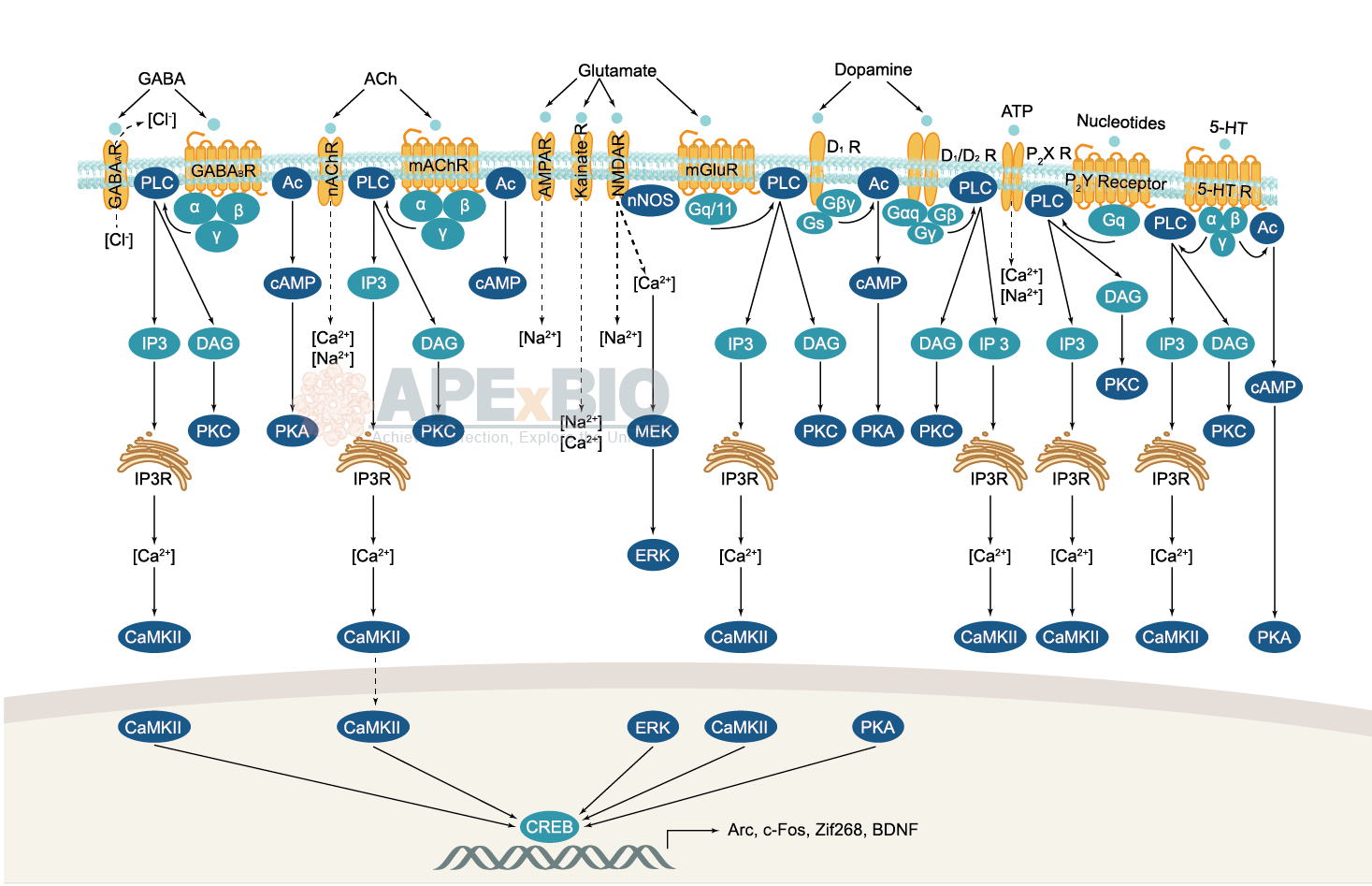
Neurotransmitter receptors function via various G-protein coupled and G-protein independent mechanisms that activate downstream intracellular signaling pathways such as cAMP/PKA, PI3K/AKT, phospholipase A2, and phospholipase C pathways. For instance, dopamine receptors act through adenylate cyclase to activate PKA and other signaling molecules, thereby mediate gene expression through the actions of CREB and other transcription factors. Other neurotransmitters such as NMDAR or AMPAR are associated with ion channels that control flux of Ca2+ and Na+, thus propagating the action potential across the post-synaptic neuron.
Dysfunctions in GABAergic/glutamatergic/serotonergic/dopaminergic pathways result in a broad range of neurological disorders such as chronic pain, neurodegenerative diseases, and insomnia, as well as mental disorders including schizophrenia, bipolar disorder, depression, and addiction.
-
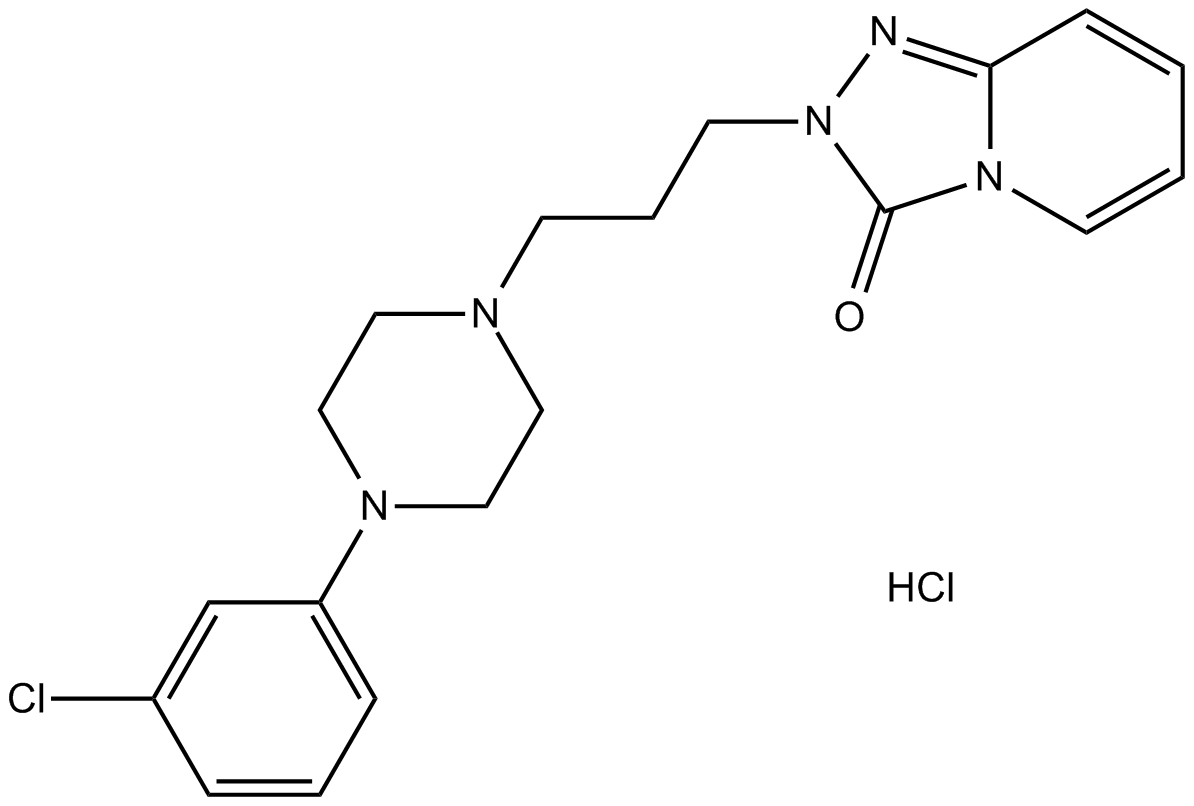 B2230 Trazodone HClSummary: 5-HT receptor antagonist
B2230 Trazodone HClSummary: 5-HT receptor antagonist -
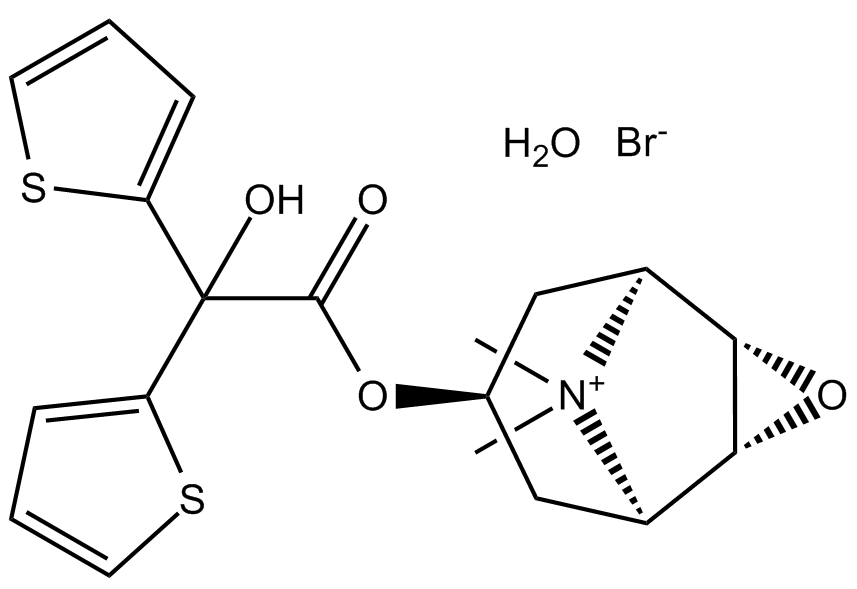 B1619 Tiotropium Bromide hydrateSummary: Muscarinic antagonist
B1619 Tiotropium Bromide hydrateSummary: Muscarinic antagonist -
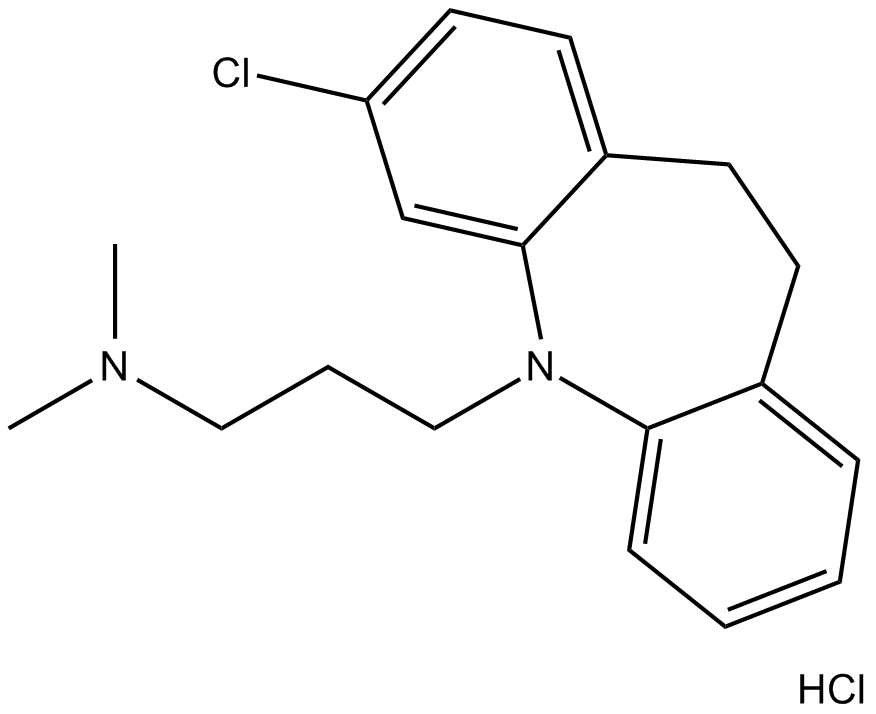 B2234 Clomipramine HClSummary: SERT/NET dopamine transporter (DAT) blocker
B2234 Clomipramine HClSummary: SERT/NET dopamine transporter (DAT) blocker -
 B1565 Roxatidine Acetate HClSummary: Specific and competitive histamin H2-receptor antagonist
B1565 Roxatidine Acetate HClSummary: Specific and competitive histamin H2-receptor antagonist -
 B2242 Urapidil HClSummary: α1-adrenoceptor antagonist and 5-HT1A receptor agonist
B2242 Urapidil HClSummary: α1-adrenoceptor antagonist and 5-HT1A receptor agonist -
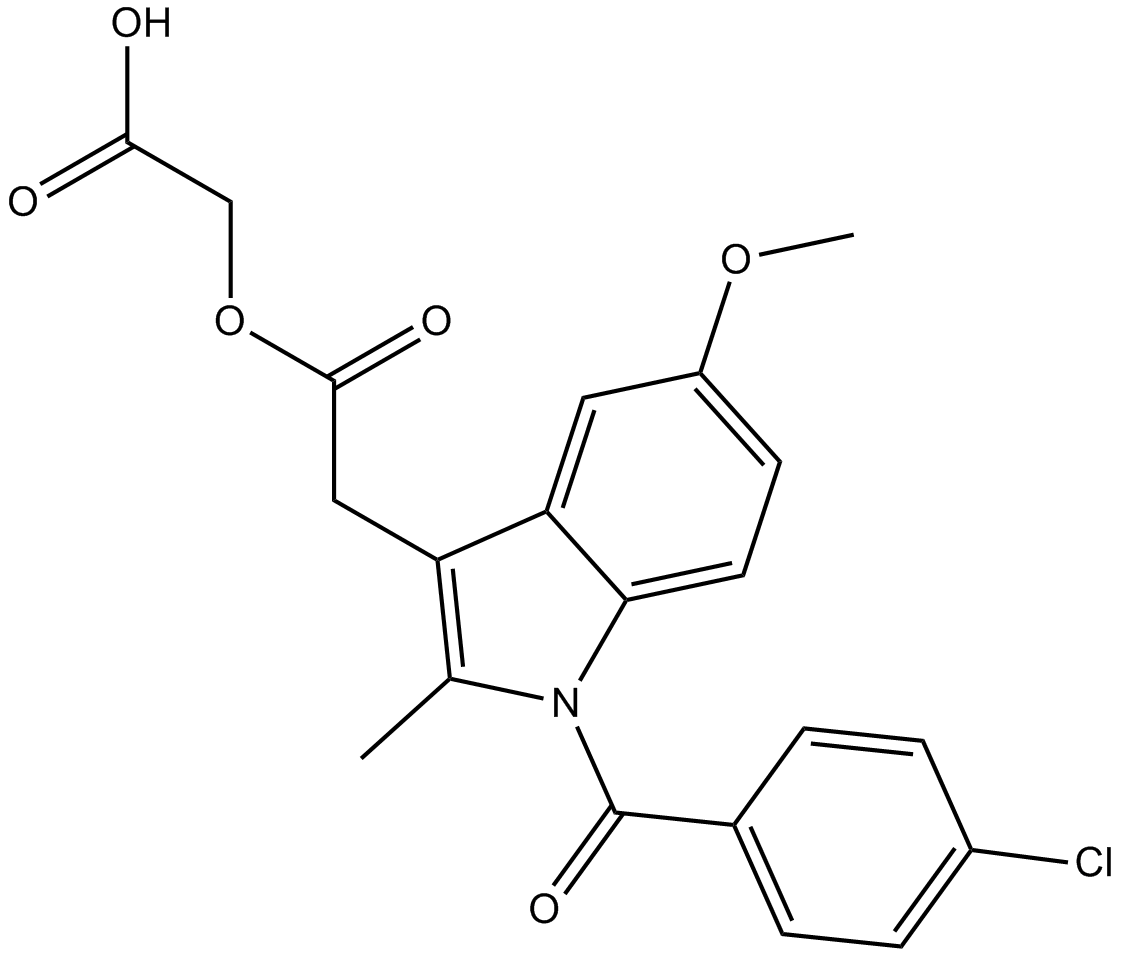 B1440 AcemetacinSummary: COX inhibitor
B1440 AcemetacinSummary: COX inhibitor -
 B2264 Dapoxetine HClSummary: Selective serotonin reuptake inhibitor
B2264 Dapoxetine HClSummary: Selective serotonin reuptake inhibitor -
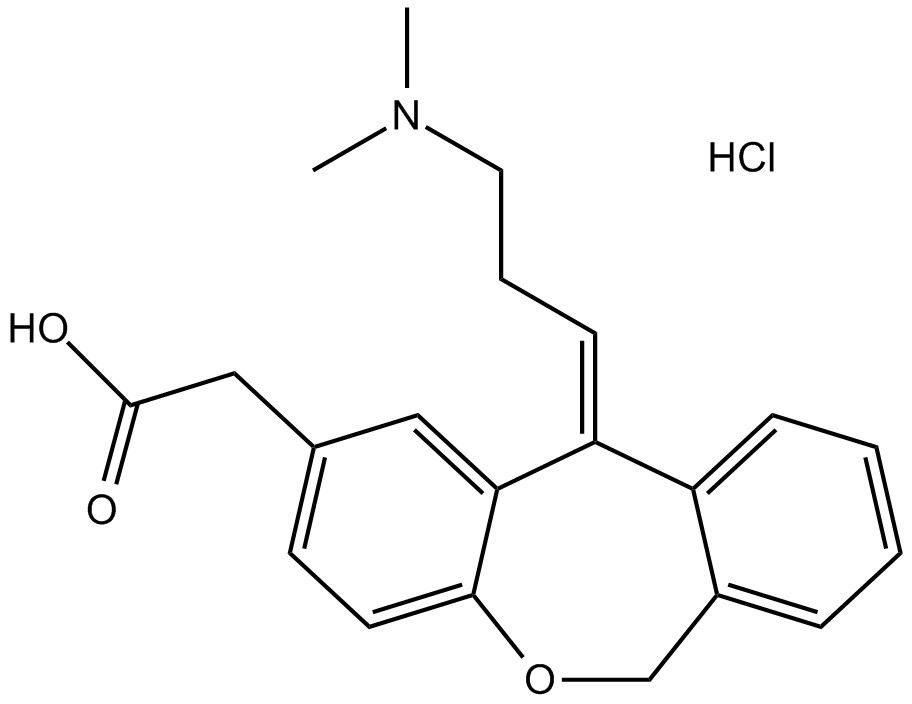 B1576 Olopatadine HClSummary: Histamine blocker
B1576 Olopatadine HClSummary: Histamine blocker -
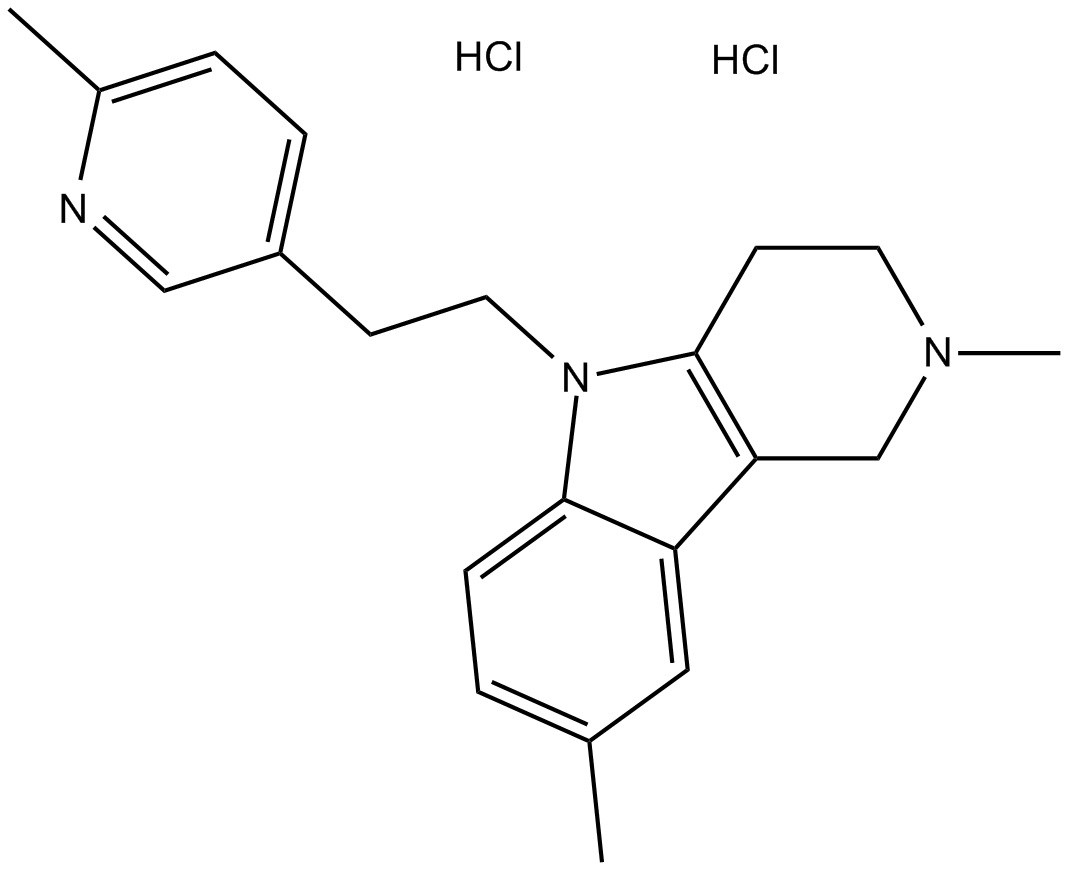 B1572 LatrepirdineTarget: Voltage-gated Calcium Channels (CaV)|NMDA receptor|adrenergic receptor|Histamine receptors|GluR|5-HT receptor|dopamine receptors|AMPA receptorSummary: Brain cell death inhibitor
B1572 LatrepirdineTarget: Voltage-gated Calcium Channels (CaV)|NMDA receptor|adrenergic receptor|Histamine receptors|GluR|5-HT receptor|dopamine receptors|AMPA receptorSummary: Brain cell death inhibitor -
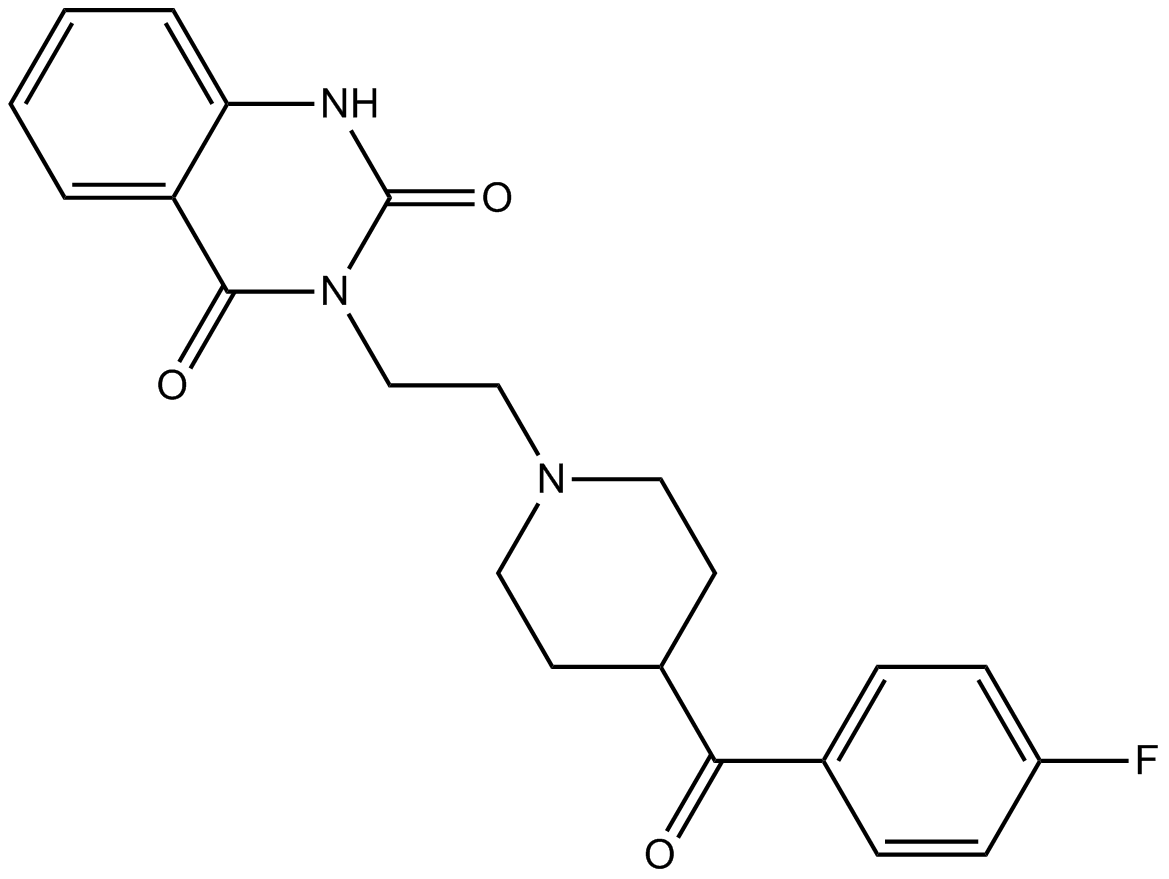 B2248 Ketanserin4 CitationTarget: 5-HT2 ReceptorsSummary: specific 5-HT2A serotonin receptor antagonist
B2248 Ketanserin4 CitationTarget: 5-HT2 ReceptorsSummary: specific 5-HT2A serotonin receptor antagonist

